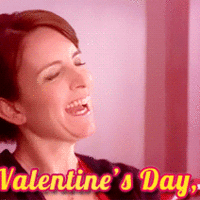The Freer and Sackler Galleries are twinning museums broadcasting appreciation for pan-Asian art directly from America's heart.
The Freer's the OG, opening back in 1923, and the Sackler's from 1987. So, the new kid on the block. Their powers combined, they represent America's collection of pan-Asian art for ogling and study alike. For real, you can make an appointment to see any artwork in storage if the piece you're hoping to study (or just look at, let's be honest) isn't on view. They might deny the request. Give it a shot and let me know.
The Sackler's story is pretty straightforward. Arthur Sackler was a physician and publisher of medical texts whose one true love was East Asian pottery. Endowments from him exist across the country, including at the Met. There's even a museum named in his honor in Beijing.
Freer's story goes back to the turn-of-the-century and even involved a big brou-ha-ha between then sitting President Theodore Roosevelt and the Supreme Court's chief justice. Charles Lang Freer was a railroad car manufacturer who dove into the art collecting game focused on James Abbott McNeill Whistler. After amassing some 1000 Whistler works, the artist and railcar tycoon struck up a close friendship. Whistler, an American expat in Europe with a keen interest in the land of the rising sun, advised Freer to direct his art collecting efforts east. One buy, and Charles was hooked.
Years passed, and Freer decided it was time to pass his collection on to the rest of US. Contacting the nascent Smithsonian Institute with an offer for them to take all his art and a $500,000 donation for the purposes of building a proper museum. The Smithsonian was sluggish to accept. Conservators were fearful that maintaining the massive collection was beyond their capacity. When President Teddy heard about the hand-wrangling, feet-dragging mess, he personally contacted the Smithsonian's chancellor Chief Justice Melville Fuller. Roosevelt described the gift as "literally beyond priceless" and bandied a veiled threat that, if Fuller didn't take care of this problem, the President would use his very particular set of skills to solve it himself (Best guess: Surprise bear attack on the Supreme Court). Freer's gift was, obviously, accepted and became the largest single present of art from an individual to a nation. The only caveat was that it had to be a cool $1,000,000 for the building instead.
Construction was hampered, briefly, by World War I. The Freer Gallery's opening marked the first proper museum on the Smithsonian's campus. Live peacocks use to walk the grounds until 1970, presumably when they were sacrificed as a flesh offering to the ghost of Theodore Roosevelt.
Today, they try so desperately to be cool with upcoming tours including the Peacock Room REMIX and Cherry Blossom Anime: "Miss Hokusai." It's adorable.


























I love having free access to the freer and sackler galleries